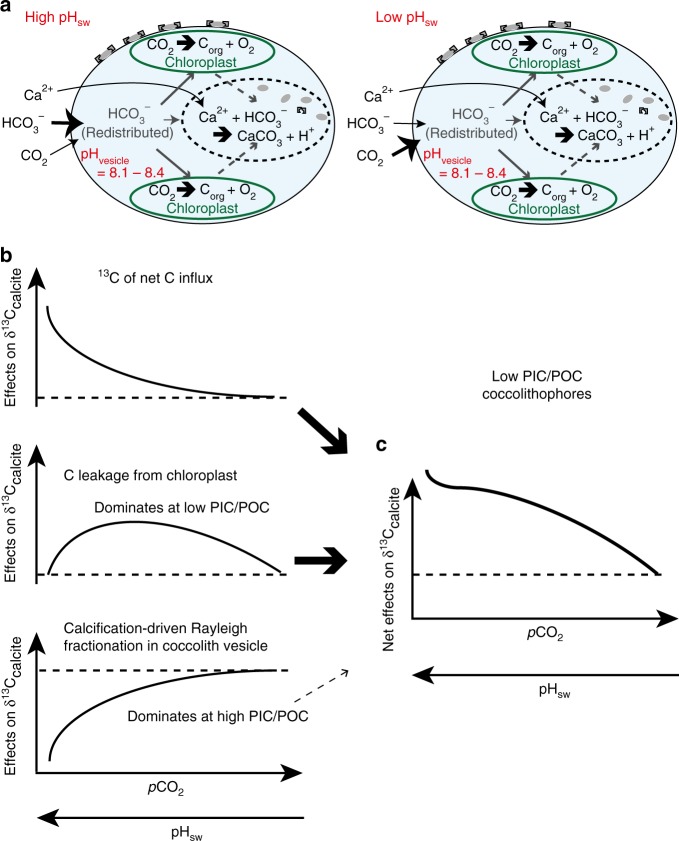Fig. 5.
Schematic illustrations of inorganic carbon uptake by O. neapolitana. a Illustration of inorganic carbon uptake model proposed in this study for O. neapolitana under high and low pHsw scenarios, which result in different proportions of CO2 to HCO3− entering the cell. We hypothesize that the changing δ13C of inorganic carbon influx (driven by a higher proportion of CO2 to HCO3− entering the cell under lower pHsw) dominates the carbon isotope fractionation recorded in O. neapolitana. In both scenarios, coccolith vesicle pH is constant despite varying seawater pH, as suggested by the relatively fixed boron isotope composition of the coccoliths formed over a range of seawater pH. Notably, pH homeostasis in the calcifying vesicle and changing carbon supply are consistent with the lack of differences in growth rates across seawater treatments, as suggested by the lack of observable changes in PIC/POC ratio and size of coccoliths and coccospheres. b The individual effects of changing inorganic carbon influx, carbon leakage from chloroplast, and calcification-driven Rayleigh fractionation of the calcifying fluid on δ13CPIC (modified from McClelland et al.52). c The combined effects of changing inorganic carbon influx, carbon leakage from chloroplast, and calcification-driven Rayleigh fractionation of the calcifying vesicle fluid on δ13CPIC in low PIC/POC coccolithophore species. Note that the calcification-driven Rayleigh fractionation has a relatively small effect for low PIC/POC coccolithophores, as indicated by arrow size

